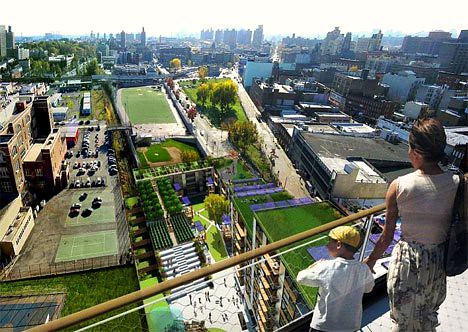Developing Liveable Cities
Strategies for Creating High Density CitiesSustainable development has promoted the development of denser urban areas as a strategy protect the environment and natural resources. Cities can often result in better resource management and use while also reducing the amount of land that is used for living, making denser cities a clear choice as the world population grows. Dense urban places will become more and more in demand as populations move towards cities, with as much as 70 percent of the world's population living in these urban centers by 2050 according to the UN. Therefore, the successful implementation of urban planning strategies is necessary to ensure that cities are designed and planned in an efficient yet liveable manner. A recent report by the Urban Land Institue (ULI) used Singapore as a case study to determine ten points that attribute to growth and development of liveable cities.
 |
| Singapore Skyline |
The following are the ten points that the study found attributed to positive growth in high density cities.
1. Plan for Long-Term Growth and Renewal
2. Embrace Diversity, Foster Inclusiveness
3. Draw Nature Closer to People
4. Develop Affordable, Mixed-Use Neighborhoods
5. Make Public Spaces Work Harder
6. Prioritize Green Transport and Building Options
7. Relieve Density with Variety and Add Green Boundaries
8. Activate Spaces for Greater Safety
9. Promote Innovative and Non-Conventional Solutions
10. Forge "3Ps (People Public Private) Partnerships"
 |
| Bryant Park In New York City |
The main focus of the majority of the points above is to spur the growth of integrated multi-use spaces within the city. The variety in the urban composition is the cities greatest strength. This variety is through the use of multiple scales of urban spaces with a combination of both natural and constructed settings. Affordability is also a concern of any developing city. Often, city districts foster to only one economic class, often pushing lower economic classes into specified areas of the city and the city edge. Mixed-use affordable neighborhoods are possibly the most important point in city development. The overall strategy for cities is to create a blended composition throughout the city. By creating the mixed-use affordable neighborhoods, cities promote this blending of populations within the city that often align with the other points for liveable cities. Affordable neighborhoods promote diversity by default, and the diversity of the population will lead to the demand of a variety of public and private partnerships to grow that would not be present in a homogeneous city.
 |
| Via Verde Development in South Bronx |












